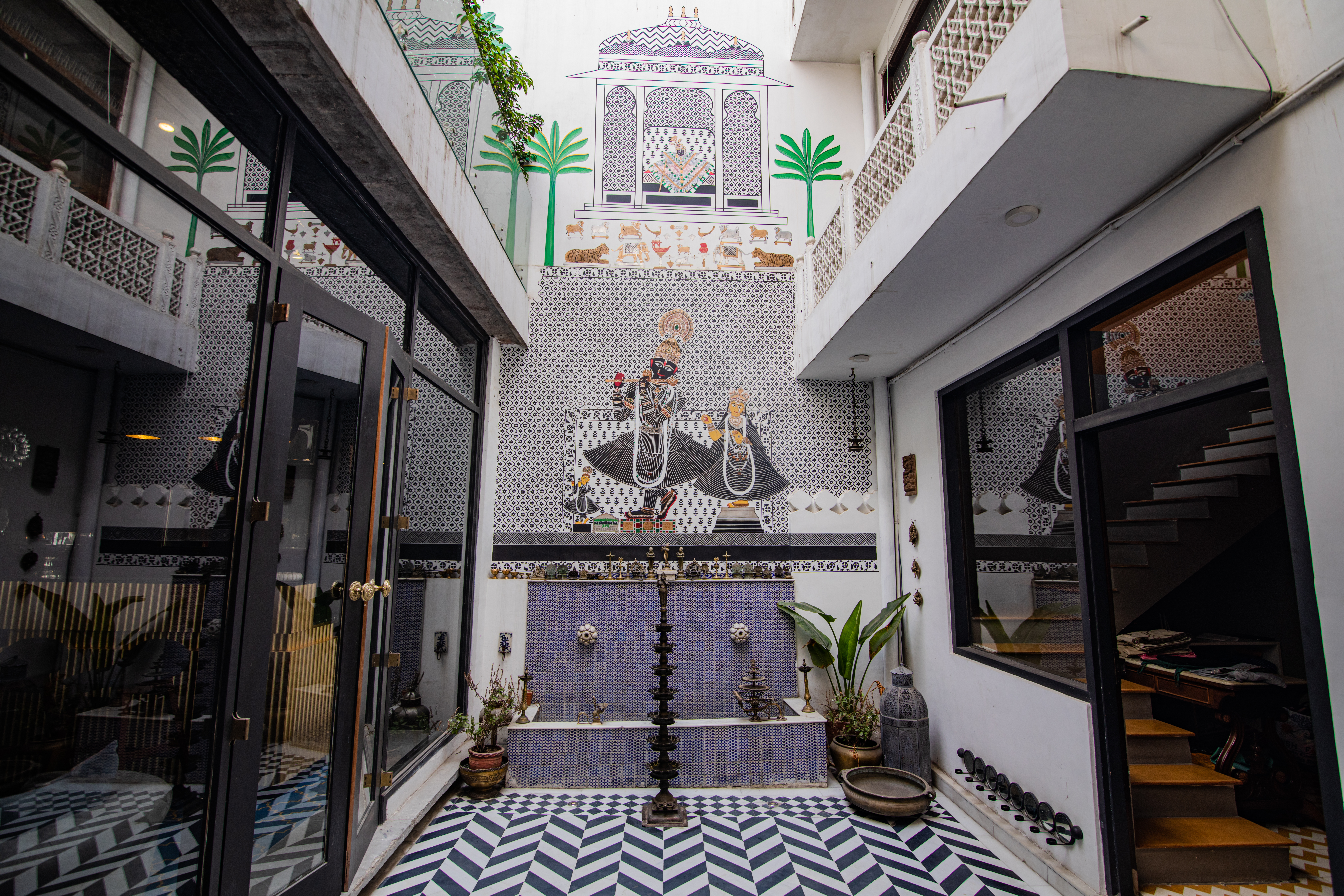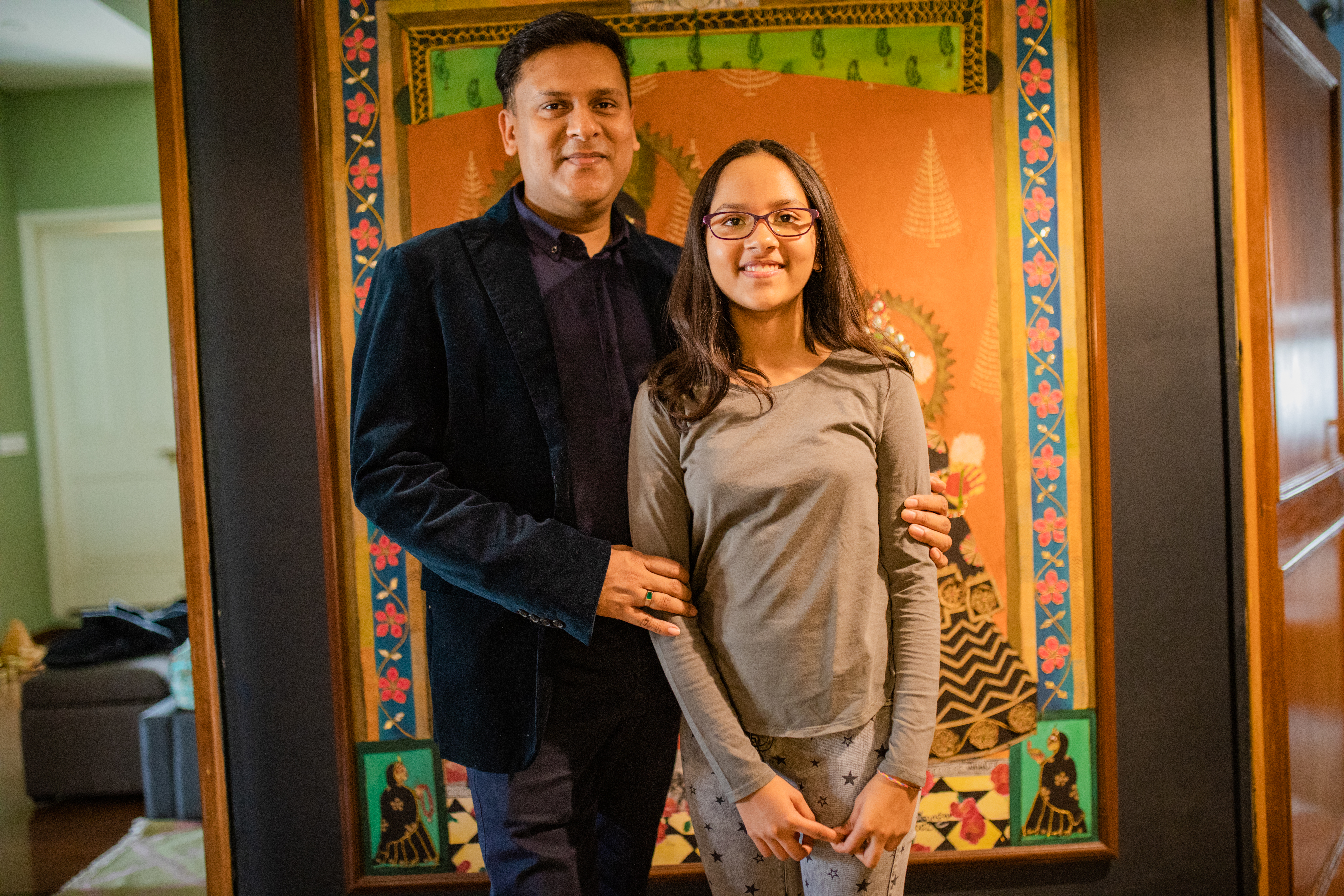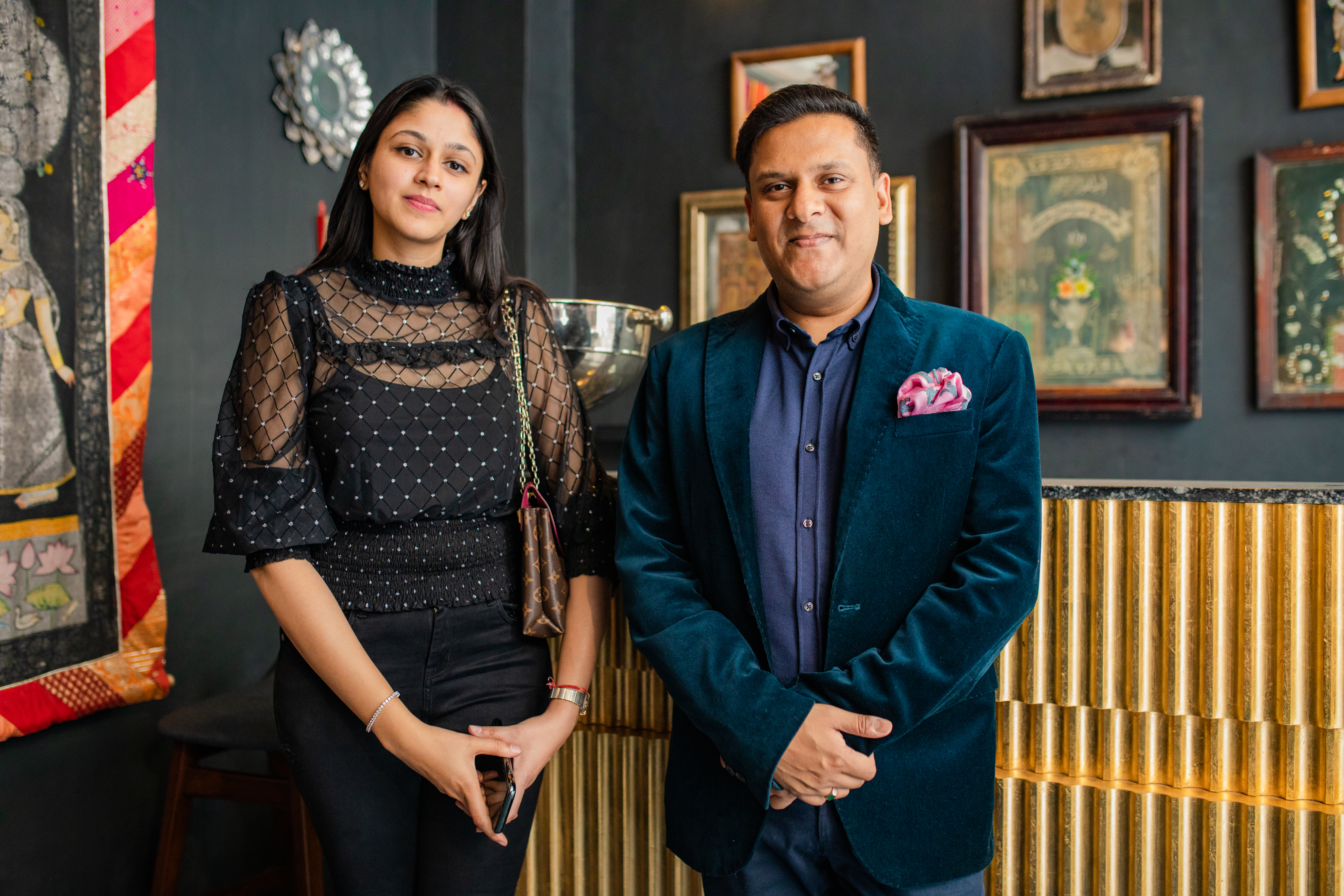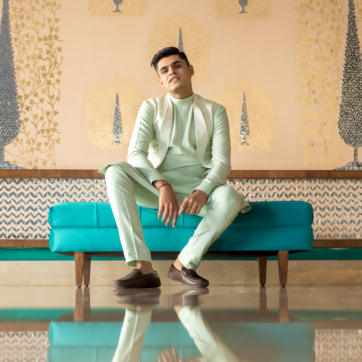
Redefining the interiors of Jaipur, Shan Bhatnagar is a famed artist and interior designer who seeks inspiration from his roots while reaching out for the stars. His artworks narrate a saga of heritage and royal artistry while traversing your imagination to the traditional temple art of Pichwai. His unconditional devotion and deep connection with Shrinath Ji is often visible in his artworks and the newly done interiors of his residence in Jaipur.
In our March segment, team TSL reached out to him to learn the whereabouts of his industry and delve deeper into the world of Interiors.

How do you describe your style of Interior? Do you have any signatures?
I believe that style and design are a reflection of and inspired from, the sum total of all your life’s experiences, exposure, memories, stories, travels etc. It cannot be taught or learnt. It is who you really are as a person! In my case, I count myself among the extremely lucky people to be born in a rich culture like India. Aesthetically, it is far superior to any other place I have seen and I derive my inspiration purely from my land! I believe that minimalism, to our Indian sensibility, is an alien reality, we are not in Germany or France; India is all about surface decoration. Starting from Mohenjo Daro to the Mughal palaces, all carry surface decoration. So that’s what I carry forward—lots of surface decoration, indigenous handiwork. We have absorbed so many cultures. What is Indian culture? It’s a diaspora of cultures that have come together—Hindus, Muslims, Sikhs, Christians and Parsis and so on. I’m not trying to make something that is royal or chic or posh. It’s just a collection of beautiful things put together.

Your journey has been truly inspiring, please share a few words on the same with our readers.
I am a self-taught artist and designer. I studied business and economics at the University of Maryland. Painting has always been close to my heart. As a child I remember really enjoying sketching, painting, going to museums, visiting Beautiful homes. Seeing an aesthetically decorated space would make me super excited and inspired. After completing my education in Germany, I moved back to India. And after a brief stint in the corporate world, I took a sabbatical to start painting more seriously. One thing lead to another and my sabbatical still continues after 15 years. In the course of this time I gave had the opportunity and privilege to design some really amazing places. All the so close to my heart that it’s difficult to choose one. But the Jaipur House, at Mount Abu has been one that I had a great time designing. It was an extremely challenging project and I’m very happy with the result!
How do the influences from Jaipur’s rich cultural contrasts find their way into your work?
Jaipur has always had a special place in my heart. I am totally inspired by all things Jaipur. Its rich built heritage, culture, traditions, colors everything is something that moves me. Naturally all this has somehow or the other found a place in my aesthetics and in various ways found a place in the projects that I design. I love craft and things handmade with love and precision cannot replace machines. I use a lot of craft in my projects, like theekri, frescoes, hand beaten brass, dhurries etc. Even in very contemporary spaces I like to use the very versatile crafts of Rajasthan.

How are the traditions of Hindu religion imbibed in your artworks?
I’m a huge fan of Krishna. I’m not a religious person, and hate to be confined in rules and regulations or have any labels attached to my worship. I love Krishna and feel blessed with the bond we share. My whole house is an ode to Krishna. My art collection, antiques, paintings all center around him. A large part of the India aesthetics is religious, the beautiful intricate carvings on temples, or the bronze idols, brass lamps, fine embroidery and embellishments on textiles and tents. All of this has inspired me in many ways in my art and I like to surround myself with these great pieces of history as a constant reminder of the greatness of our rich cultural heritage.

How is the interior and aesthetic industry evolving in Jaipur? Do you trace any changes?
JAIPUR has become a brand in itself. A lot of people have made Jaipur their home in the context of design. It’s my easier to find the right craftsmen to produce various things. The environment is naturally conducive to creating wonderful things. The industry is definitely evolving and there is a significant shift in the mindset of people who want to live in Beautiful homes and spaces. There are some very talented Designers whose work is extremely exceptional in terms of using the Jaipur craft into something very modern and useful, while still keeping the essence intact. It’s very exciting times and I’m loving the metamorphosis this city is going through at the moment.
As an artist, you often have to strike a balance between creative art and commercial paintings. Any advice on the same?
The only advice I have for artists or creative people is to do what your heart desires. You paint for yourself, it’s an expression of your Inner self, your passion, and your energy finds an expression in your paintings or things you produce. It’s important to be original, excited and happy with what you do. If we think of commerce, we will lose the essence eventually. I never paint for anyone else but me. If someone likes my work and is willing to pay of it well and good!

Which stereotypes do you try to overcome in the world of interior design?
There is a huge craze for glass and steel and minimalism in India Today. We are using apps and magazine that have pictures of western homes and spaces. And everyone seems to copy that. All homes look like clones of each other. Extremely predictable and boring. Most of these spaces are not even conducive to our weather. Whatever happened to courtyards, cross ventilation etc.; something that was so integral to our architecture has all disappeared. Even with art and artifacts in our homes we are aping the west. It would be nice to see people buying Indian artists, beautiful Indian collectibles etc. Marrying contemporary Interiors with Indian craft is what I love doing the most! We have a rich craft tradition in India, most of them dying a slow death; the whole minimalist Hong Kong airport look doesn’t inspire me at all.

The scope of Interior & Architecture as a career is growing enormously. Any word of advice for the new interior designers on how to establish themselves in the industry and find new clients? Should these aspiring designers work under the already established ones or foray into the industry as a freelancer?
It is important for architects and interior designer to be original, passionate and enthusiastic about creating something new. It’s very rare to see a well-designed space these days. Too many mediocre buildings will change the way our future generations will see India and Indian aesthetics. I feel everything out ancestors made was beautiful. It was made with thorough planning and the spaces were very functional yet very aesthetic. I’m not saying that we have to continue living in the past. But our present and future should grow organically. Architects of any period play a very important role in how people will know about a culture or place. It’s a huge responsibility. Yes it is a good idea to start working with someone whose work you admire and is willing to teach you and then grow from there. It’s not just a profession for us to earn our bread and butter…but a huge responsibility of how people will perceive our culture and built heritage in the future.
Hope you loved reading our feature! Share your thoughts with us in the comments below.











Join The Conversation